After a baby falcon tumbled from the 33rd floor of a Baltimore skyscraper, the building’s property manager knew just who to call: biologist and raptor specialist Craig Koppie.
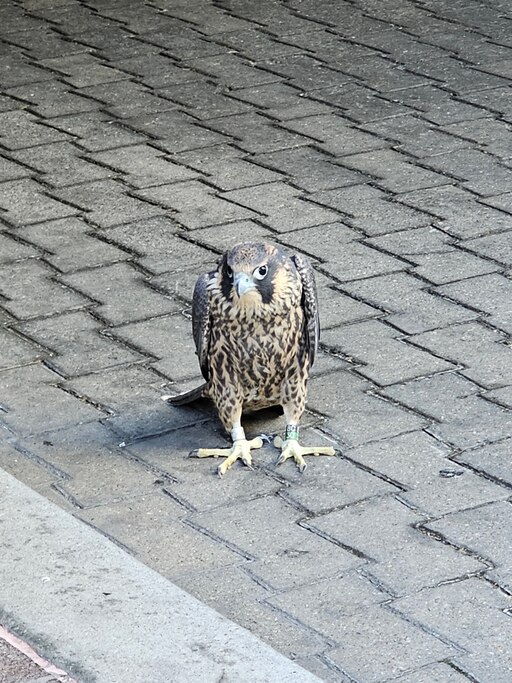
Within hours of the urgent call in May, Koppie and his wife, Pamela, a (human) nurse, arrived with a dolly cart of gear. Their mission? To reunite the still-dependent fledgeling with her parents.
The nest on Light Street has been home to generations of peregrine falcons since the 1970s. Koppie has helped the nest thrive for most of his 40-plus year career with the U.S. Fish and Wildlife Service.

In an unoccupied office on the same floor as the nest, Koppie checked the bird for injuries and drew blood samples to be tested for diseases such as bird flu.
The Baltimore Banner thanks its sponsors. Become one.
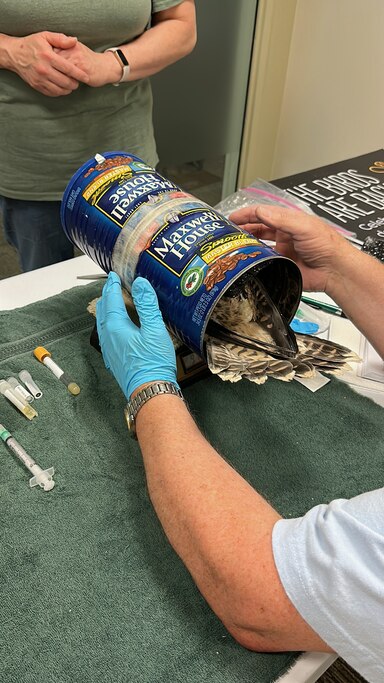

Koppie dunked the bird up to its neck in a 5-gallon bucket of water before placing her back outside on her flat, dirt-filled nest. The young falcon will someday be able to fly more than 200 mph, but at that moment, all she could do was stand there, drenched.
“She’ll start walking back and forth, and eventually she’ll see her parents and take off again,” Koppie said. “With your fingers crossed, she stays in the air this time.”
Within minutes, her parents appeared. One landed on the balcony a safe distance away to check her out. The other hovered on a swell of air. These are just a few of the approximately 10,000 birds that Koppie estimates he’s worked with over the course of his career.
“Yes, you’re welcome,” he said to the screeching fledgeling.
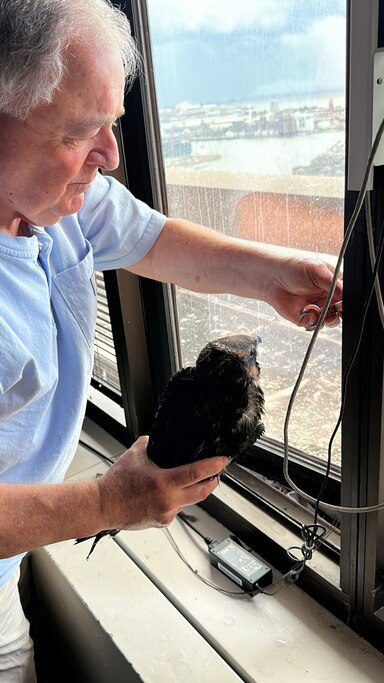
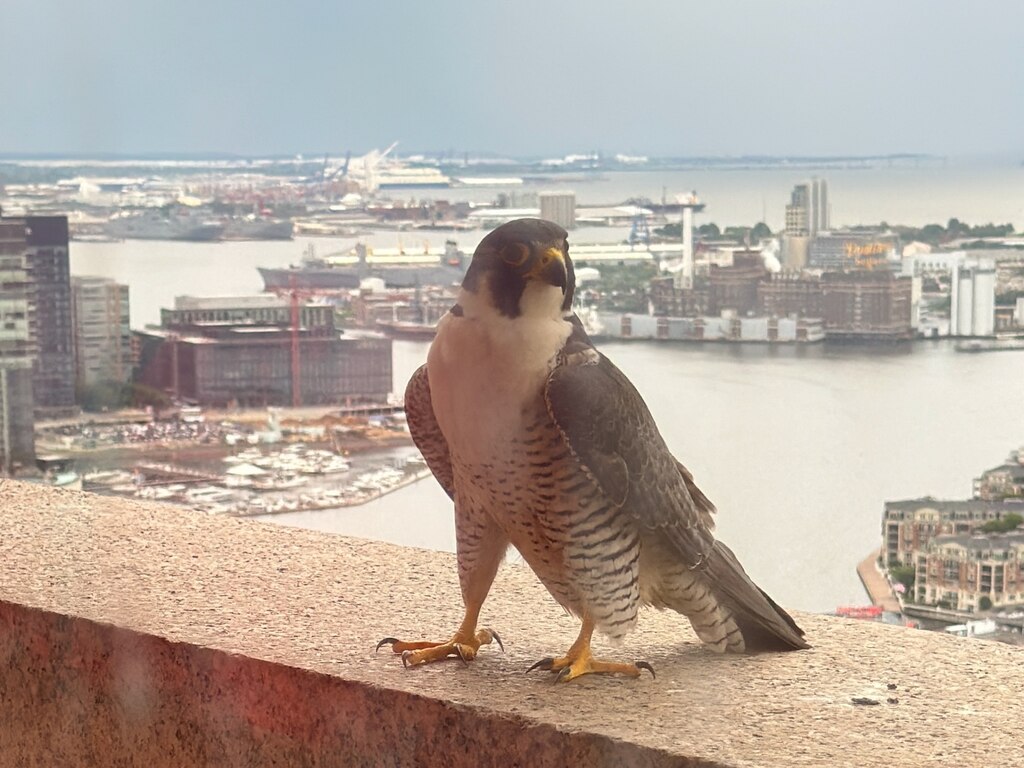
A success story
It’s not the first time Koppie has met this falcon. He banded the chicks when they were about 20 days old and still with downy, white fluffy feathers, so scientists could track them. The young female and her three siblings are some of the approximately 115 falcons that have been born on the Light Street building ledge as part of a decades-long legacy of repopulating the species.
The Baltimore Banner thanks its sponsors. Become one.
In the mid-20th century, the toxic pesticide DDT nearly wiped out peregrine falcons along the East Coast. Since then, scientists have acted to save the species. The Peregrine Fund, a nonprofit dedicated to the raptors, began reintroducing the birds in the 1970s. One released falcon, named Scarlett, chose the Light Street windowsill for her nest in 1978.
Scientists brought her captive male falcons hoping they would pair, but things didn’t go smoothly at first. Her first two mates were incompatible with her, the third died from eating rat poison and the fourth flew away. The fifth mate was wounded by a shotgun, recovered, and then was fatally hit by a car.
While she awaited a successful mate, scientists brought Scarlett hatchlings born in captivity, which she willingly adopted and raised.
Scarlett’s fate finally changed when a wild male nicknamed Beauregard paired with her in the 1980s. Their offspring were the first wild-born peregrine falcons in an urban environment on the East Coast in about 30 years, according to the Chesapeake Conservancy.
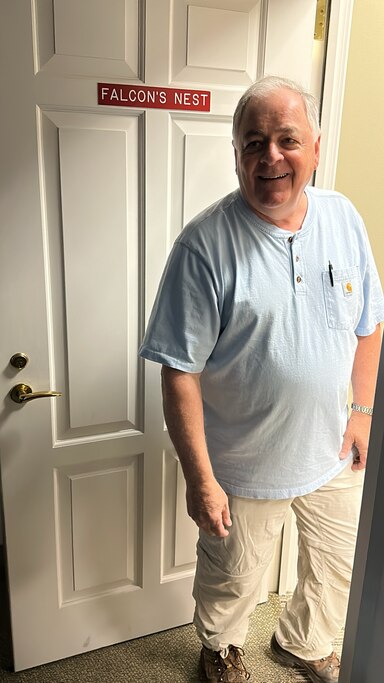
Cities can be havens for peregrine falcons, who get an all-you-can-eat buffet of pigeons without having to worry about predators.
The Baltimore Banner thanks its sponsors. Become one.
But urban environments still present threats — namely crashing into obstacles such as vehicles, power lines or reflective windows. Peregrine falcon populations in Maryland have grown, and they are finally nesting in natural habitats like coastal rock faces, said Dave Brinker, avian conservation ecologist with the Maryland Department of Natural Resources.
“It’s a conservation success story,” he said. “We now have more peregrine falcons nesting in Maryland than we’ve ever had.”
The public can observe the Baltimore falcon family via a webcam sponsored by a partnership between the Chesapeake Conservancy, explore.org and building property manager COPT Defense Properties.


Comments
Welcome to The Banner's subscriber-only commenting community. Please review our community guidelines.